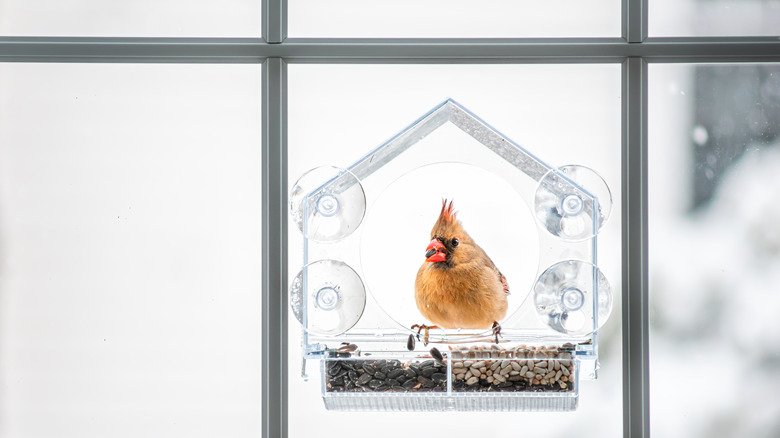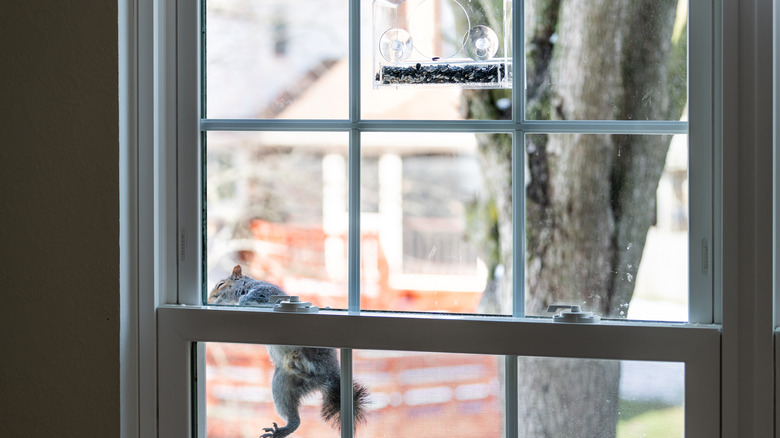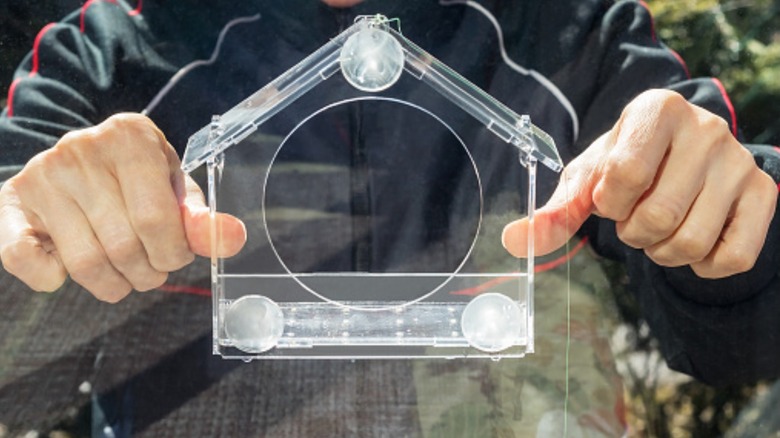Why Using Window Bird Feeders May Not Be The Best Idea
Window bird feeders attach to the outside of your windows with suction cups. Many bird-lovers purchase these types of feeders because they're made out of clear plastic and allow you to see fledglings close-up from the comfort of your own home. However, while they do come with some benefits, they're also potentially harmful to feathered friends. These feeders are not always sturdy enough to support larger birds, can attract pests like rodents, make birds more accessible to predators, and could cause birds to injure themselves because of the reflective windows.
Though there are several drawbacks, window feeders allow those without much space outside to easily watch birds. They also often attract a variety of small species including sparrows, robins, goldfinches, and wrens. For those that photograph wildlife, window feeders make it easier to get close-up images of these animals without scaring them away. By mounting your feeder correctly, making your windows less reflective, and cleaning up any spilled seeds, you can make these feeders safer for your visitors.
Drawbacks of window bird feeders
Windows are extremely reflective, which can be confusing for birds. If a feathered friend stops at your window feeder and sees its reflection, it may think it's another bird and attack the glass. This could cause the bird to injure itself, especially if it repeatedly hits the window. Placing feeders at an appropriate distance away or making the window less reflective will make it easier for fledglings to navigate your yard. Another downside is that squirrels, mice, and other pests may be attracted to window feeders. Seeds often fall onto the ground, which can draw animals close to your home. If an animal climbs onto the window feeder, it could take food from the birds, potentially spread diseases to them, or break the feeder.
While this type of feeder lets smaller birds get close to you, they often cannot hold up the weight of a larger bird. In fact, they may not even be able to support several birds at one time, limiting the type and amount of feathered friends you'll be able to watch. Cats are another concern as well; because these feeders are lower to the ground than other types, outdoor cats may stalk the birds, leaving them in danger of becoming prey.
How to safely use window feeders
To avoid birds hitting their reflection in your window and potentially harming themselves, make sure your window has a screen, which will make it less reflective. You could also place decals on your window, but this may make it less aesthetically-pleasing for bird watching. If you notice that birds are smacking the glass, try temporarily closing the curtains. Awnings and external shades will also help prevent birds from flying into your window.
Investing in a sturdier platform window feeder may allow larger birds to visit, but it's also important to properly mount your feeder to the window. Before securing it to the glass, clean the surface and the suction cups on the feeder. When you stick the feeder to the window, press on the suction cups to remove any air pockets. If you're concerned about pests, cleaning up seed that has fallen onto the ground and only putting out a little food at a time will help keep rodents from bothering your feeder. Placing the feeder higher up on a window or in a spot that's more difficult for animals to climb can also deter pests and keep birds safe from predators.


